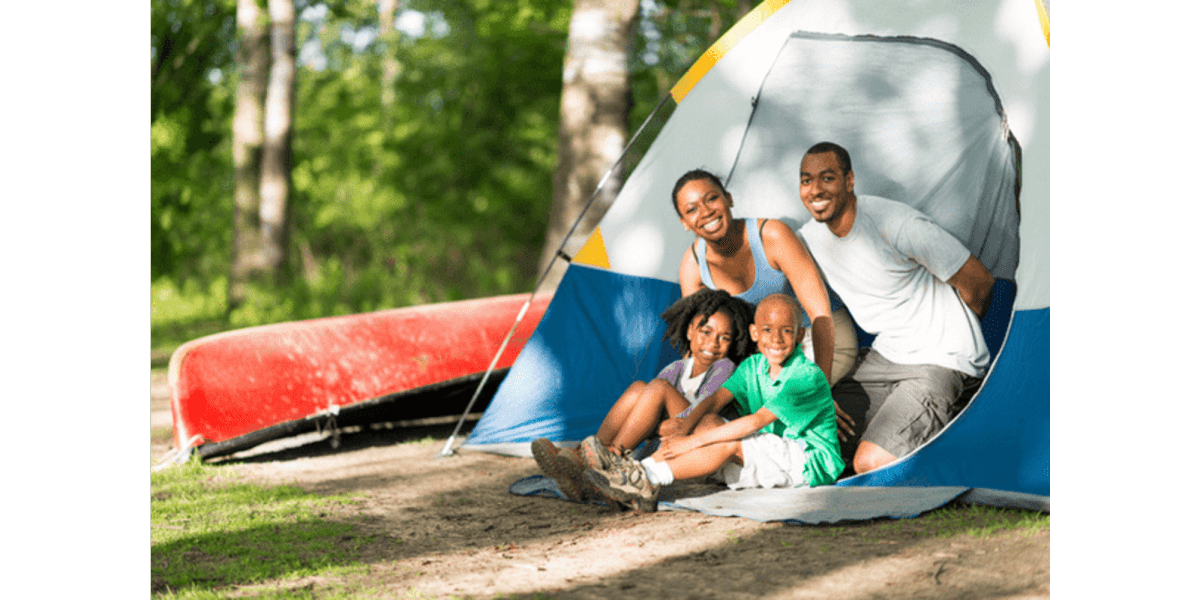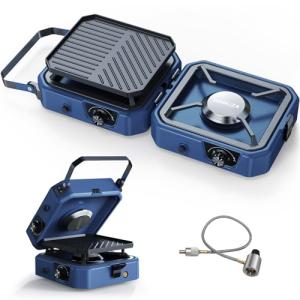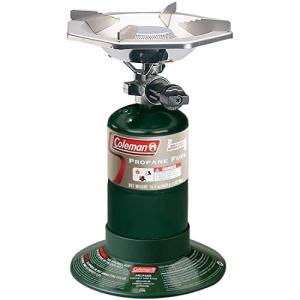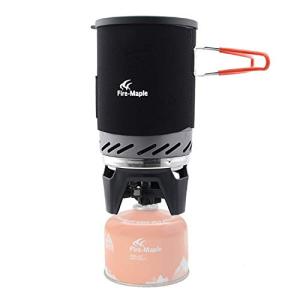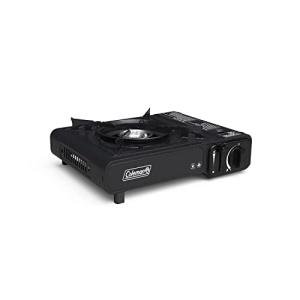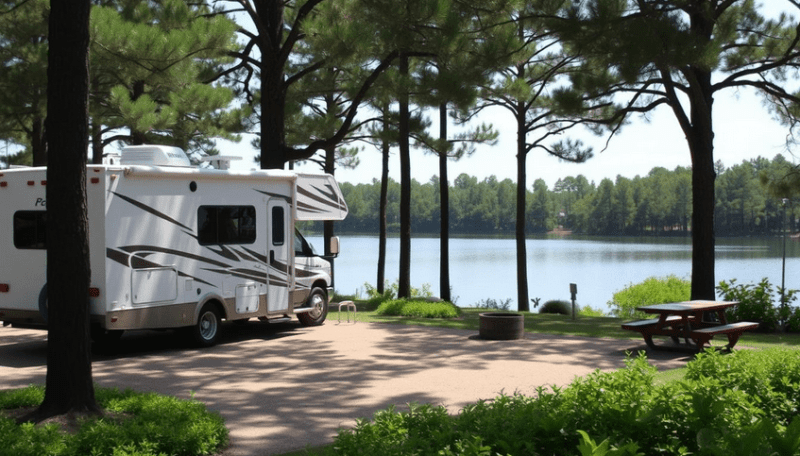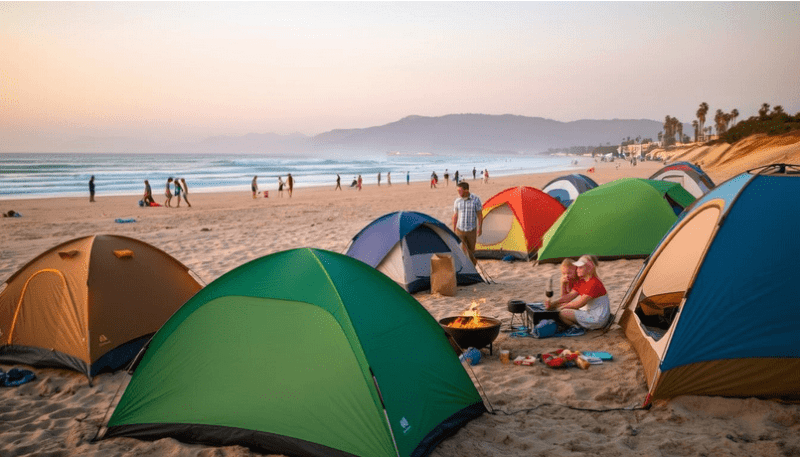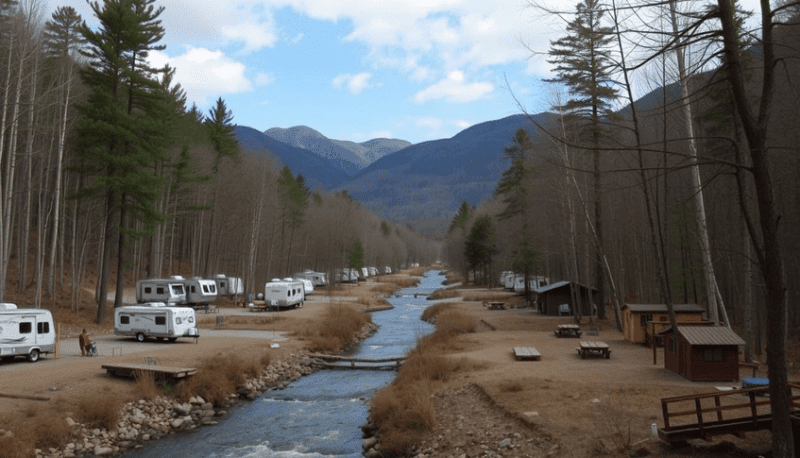Planning your first camping trip can be exciting and a bit overwhelming. I've been there, and I know how important it is to pack the right gear. Camping is a great way to connect with nature and unwind from daily stress. But having the right equipment can make or break your outdoor experience.

The top 10 must-haves for your first camping trip include a tent, sleeping bag, backpack, cooking stove, water container, first aid kit, map and compass, appropriate clothing, flashlight, and multi-tool. These items form the foundation of a successful camping adventure. With these essentials, you'll be prepared for most situations you might encounter in the wilderness.
Picking the right gear doesn't have to be complicated. I'll guide you through each item, explaining why it's important and what features to look for. By the end of this post, you'll feel confident about what to pack for your first camping trip.
Key Takeaways
- A reliable tent and comfortable sleeping system are crucial for a good night's rest outdoors
- Proper clothing and navigation tools help you stay safe and comfortable in varying conditions
- Essential gear like a stove, water container, and first aid kit ensure you're prepared for basic needs and emergencies
Choosing the Right Tent
A good tent is key for a comfy camping trip. I'll cover the main things to think about when picking one.
Size and Capacity
Tent size matters a lot. I always pick a tent based on how many people will sleep in it. A 2-person tent fits two snugly. For more space, I go up a size.
A 3-person tent gives two campers room to spread out. It also fits gear inside. For families, 4-person or 6-person tents work well.
I check the tent's floor space in square feet. More space means more comfort. I also look at peak height. Taller tents let me stand up inside.
Weather Resistance
A tent must keep me dry and comfy in all weather. I look for tents with good waterproofing.
Rainflies are key. They cover the tent and keep rain out. Full-coverage rainflies work best. I check seam sealing too. This stops water from seeping in.
For windy spots, I pick tents with strong poles. Aluminum poles hold up well. I also check guy lines and stakes. These help the tent stay put in wind.
Mesh panels are great for airflow. But I make sure they have covers for cold nights.
Ease of Setup
I always pick a tent I can set up fast and easy. This is key when I'm tired or it's dark.
Color-coded poles help a lot. They show me where each pole goes. Instant tents are super quick to set up. They have pre-attached poles that pop into place.
I practice setting up my tent at home first. This helps me learn the steps. I also check if the tent needs special tools to set up.
Freestanding tents are nice. I can move them around camp easily. But I always stake them down for safety.
Selecting a Sleep System

A good sleep system is key for a comfy camping trip. It keeps you warm and cozy all night. I'll cover the main parts you need to pick.
Sleeping Bag Types
Sleeping bags come in different shapes and warmth levels. The two main shapes are mummy and rectangular. Mummy bags are snug and warm. They're great for cold weather. Rectangular bags give more room to move. They work well in milder temps.
Sleeping bags have temperature ratings. I suggest getting one rated 10°F lower than the coldest temp you expect. This gives a safety margin.
For fill, you can choose down or synthetic. Down is warmer for its weight. But it loses insulation when wet. Synthetic stays warm even if damp. It's also cheaper.
Sleeping Pads
A sleeping pad goes under your bag. It gives cushion and insulation from the cold ground. There are three main types:
- Air pads: Light and comfy, but can puncture
- Self-inflating: Mix of foam and air, good all-around choice
- Foam: Cheap and durable, but bulky
Pads have R-values that show how well they insulate. Higher is warmer. For summer, R-value of 2-3 is fine. For colder weather, aim for 4 or higher.
Additional Comfort Items
A few extra items can make your sleep setup even cozier. I always bring a small camping pillow. It's way better than using bunched-up clothes.
A sleeping bag liner adds warmth and keeps your bag clean. It's easier to wash than the whole bag.
For car camping, I like to bring extra blankets. They're great for layering if it gets cold. Or use them to sit on around the campfire.
Don't forget a headlamp or flashlight. It's handy for nighttime bathroom trips or finding stuff in your tent.
Backpack Essentials

A good backpack is key for any camping trip. I'll cover the most important things to look for when choosing and packing your backpack.
Size and Fit
I always start by finding the right backpack size. For a weekend camping trip, a 40-50 liter pack usually works well. It's big enough to hold gear but not too bulky.
Fit is crucial for comfort. I make sure the pack's torso length matches my measurements. The hip belt should sit on top of my hip bones. Padded shoulder straps help distribute weight evenly.
I try on several packs with weight inside before buying. A well-fitted pack shouldn't pull back on my shoulders or cause any pain points.
Pack Organization
I use a system to keep my gear organized and easy to find. Waterproof stuff sacks are great for grouping similar items.
Here's how I typically organize my pack:
- Bottom: Sleeping bag
- Middle: Heavier items like food and cooking gear
- Top: Light, frequently used items like rain jacket
- Side pockets: Water bottles, snacks
- Hip belt pockets: Map, compass, phone
I pack my tent on the outside or in a separate compartment if my pack has one. This keeps the inside dry if the tent is wet.
Load Distribution
Proper weight distribution makes a big difference in comfort. I follow these guidelines:
- Heavy items close to my back
- Medium weight items in the middle
- Light items on top and in outside pockets
I aim for a 60/40 weight split between my hips and shoulders. The hip belt should carry most of the load.
I adjust the load lifter straps to keep the pack close to my body. This improves balance on uneven terrain.
Compressing the pack with straps helps stabilize the load. I tighten these after the pack is full.
Cooking Gear and Food Storage

Proper cooking equipment and food storage are crucial for a successful camping trip. The right gear makes meal prep easy and keeps your food fresh and safe.
Stoves and Fuel
For cooking outdoors, I recommend a portable camping stove. Propane camp stoves are popular and easy to use. They're lightweight and provide consistent heat for cooking.
I always bring extra fuel canisters. It's better to have too much than run out mid-trip.
For longer trips, I prefer a dual-fuel stove. These can use both white gas and unleaded gasoline, giving more fuel options.
Safety is key. I never use stoves inside tents or enclosed spaces. Good ventilation prevents carbon monoxide buildup.
Cookware
I pack a set of camping cookware designed for outdoor use. These sets often include:
- A pot for boiling water
- A frying pan
- Plates and bowls
- Utensils (sporks are great space-savers)
- Cups or mugs
Look for lightweight, durable materials like aluminum or titanium. Non-stick coatings make cleanup easier.
I always bring a few cooking tools:
- A sharp knife
- A cutting board
- A can opener
- Tongs or a spatula
Don't forget cleaning supplies. Biodegradable soap and a scrubber are essential.
Food Preservation
Keeping food fresh is a top priority. I use a high-quality cooler to store perishables. Hard-sided coolers offer better insulation than soft ones.
Pre-chill the cooler before packing. This helps it stay cold longer.
I organize food in waterproof containers or zip-top bags. This prevents water from ruining dry goods as ice melts.
For longer trips, I bring a portable refrigerator. These run off car batteries or portable power stations.
Dry goods go in airtight containers to keep out moisture and critters. I hang food in bear-proof containers if camping in bear country.
Navigational Tools

Navigational tools are crucial for a safe and successful camping trip. They help you find your way and avoid getting lost in unfamiliar terrain.
Maps
Maps are a must-have for any camping trip. I always bring detailed topographic maps of the area I'm exploring. These show terrain features like hills, valleys, and water sources.
Paper maps don't need batteries and work even without cell service. I make sure to get waterproof maps or keep them in a waterproof case.
It's smart to study the map before heading out. I mark key landmarks, campsites, and planned routes. This helps me stay oriented during the trip.
Learning to read a map is an important skill for any camper. Practice at home before your trip to build confidence.
Compasses
A reliable compass is essential for navigation in the wilderness. I always pack one, even if I'm bringing other tools.
Compasses don't need batteries and are lightweight. They work in all weather conditions and can help you find your way if other methods fail.
Learning to use a compass takes practice. I recommend practicing before your trip. Basic skills include finding north and following a bearing.
Pair your compass with a map for the best results. This combo lets you pinpoint your location and plan routes accurately.
Some compasses come with extra features like a mirror for signaling or a clinometer for measuring slopes.
GPS Devices
GPS devices offer precise location information and can be very helpful when camping. They use satellite signals to show your exact position on a digital map.
Many smartphones have built-in GPS. I often use hiking apps that work offline. Remember to download maps before you lose cell service.
Dedicated GPS units are more rugged and have longer battery life. They often come preloaded with topographic maps.
Some GPS devices can track your route, mark waypoints, and even send SOS signals in emergencies. These features can be lifesavers in remote areas.
While GPS is useful, I never rely on it alone. Batteries can die and electronics can fail. That's why I always bring a map and compass as backups.
Appropriate Clothing

Packing the right clothes for your first camping trip is crucial. I'll cover layering techniques, proper footwear, and essential accessories to keep you comfortable outdoors.
Layering for the Outdoors
I always start with a moisture-wicking base layer. This keeps sweat away from my skin. For the middle layer, I choose insulating materials like fleece or wool. These trap heat effectively.
The outer layer is key for protection from wind and rain. I pick a waterproof and breathable jacket. It shields me from the elements while letting moisture escape.
I pack extra socks and underwear. They're small but make a big difference in comfort. For sleeping, I bring warm, dry clothes just for the tent.
Remember, clothes that are easy to layer are best. I can add or remove items as the temperature changes throughout the day.
Footwear
Good shoes are a must for camping. I always bring sturdy, waterproof hiking boots. They protect my feet on rough terrain and keep them dry.
For around the campsite, I pack a pair of comfortable sandals or slip-ons. They're great for quick trips to the bathroom or just relaxing.
I make sure to break in new boots before the trip. This prevents blisters and discomfort. Thick, cushioned socks are also important. They add extra comfort and warmth.
If I'm planning water activities, I bring water shoes. They protect my feet from sharp rocks and hot sand.
Accessories
The right accessories can make or break a camping trip. I always pack a wide-brimmed hat for sun protection. It keeps my face and neck shaded.
Sunglasses are essential too. They shield my eyes from harsh sunlight and glare off water or snow. I choose polarized lenses for the best protection.
For cooler weather, I bring a warm beanie and gloves. They're small but make a big difference in comfort. A lightweight, multi-use jacket is also key. It can serve as a windbreaker or extra layer.
I don't forget a bandana or buff. These versatile items can be used as a headband, neck gaiter, or even a makeshift mask.
Emergency and First Aid

Being prepared for emergencies is crucial when camping. I'll cover the key items you need to handle medical issues, stay safe in unexpected situations, and signal for help if needed.
First Aid Kits
A well-stocked first aid kit is essential for any camping trip. I always pack bandages, gauze, and antiseptic wipes to treat minor cuts and scrapes. Pain relievers, antihistamines, and any personal medications are also important.
I include tweezers for splinter removal and scissors to cut tape or bandages. Burn gel and insect bite treatment are useful for common outdoor mishaps.
It's smart to keep a list of emergency contacts in the kit. I write down local emergency services and poison control numbers. Checking expiration dates on medications before each trip is a good habit.
Emergency Shelters
An emergency shelter can be a lifesaver in harsh weather or if I get lost. I always pack a lightweight emergency blanket, also called a space blanket. It reflects body heat and provides protection from wind and rain.
A small tarp is versatile for creating makeshift shelter. I know how to set it up quickly using nearby trees or my trekking poles.
For longer trips, I consider bringing a compact emergency tent. These pack small but can offer crucial protection in severe conditions.
Signaling Devices
If I need to call for help, signaling devices are vital. A whistle is my go-to item - it's loud, lightweight, and doesn't run out of batteries. Three short blasts is the universal distress signal.
I carry a small signal mirror for sunny days. It can reflect light over long distances to attract attention.
A brightly colored flag or bandana can make me more visible in dense forest. At night, I rely on a headlamp with a strobe function to signal my location.
For remote areas, I consider packing a personal locator beacon. It's pricey but can send out an SOS via satellite in true emergencies.
Environmental Considerations

When camping, I always keep nature's wellbeing in mind. It's crucial to leave no trace and protect the environment we enjoy.
I make sure to bring biodegradable soap and toothpaste. These products break down naturally and don't harm plants or animals.
Reusable water bottles and food containers are a must. They cut down on waste and keep the campsite clean.
I pack a trash bag to collect all my garbage. Sleeping amid nature makes me want to keep it pristine for others to enjoy.
For campfires, I only use existing fire pits. I never cut live trees for firewood. Instead, I collect fallen branches or bring my own firewood.
I stick to marked trails when hiking. This protects plants and prevents erosion. It also keeps me safe from getting lost.
Solar-powered lights are great for camping. They're eco-friendly and don't need batteries. Plus, they're quiet and won't disturb wildlife.
Lastly, I respect wildlife by keeping my distance and not feeding them. This keeps both animals and campers safe.
Frequently Asked Questions
New campers often have questions about what to bring and how to prepare. I'll cover the key items and tips for a successful first camping trip.
What are the essential items for a beginner's camping trip?
For your first camping trip, you'll need a tent, sleeping bag, and camping pad. Bring a camping stove for cooking meals. Pack a first aid kit, flashlight, and extra batteries. Don't forget warm clothes, rain gear, and sturdy shoes.
Which camping gear is considered a must-have for safety and basic comfort?
A good-quality tent is crucial for shelter and safety. Bring a warm sleeping bag suited for the expected temperatures. Pack a reliable flashlight or headlamp for navigating in the dark. A multi-tool can be handy for various tasks.
What are the five most important things to include when packing for camping?
I recommend packing these five key items:
- Tent
- Sleeping bag
- Water and food
- First aid kit
- Weather-appropriate clothing
Which items are commonly forgotten when preparing for a camping trip?
Campers often forget to pack insect repellent and sunscreen. Many overlook bringing extra socks and underwear. A basic tool kit with duct tape can be useful. Some forget trash bags for keeping the campsite clean.
How should a first-time camper prepare for their outdoor experience?
Research your campsite and local regulations beforehand. Practice setting up your tent at home. Check the weather forecast and pack accordingly. Plan your meals and bring enough water. Tell someone your plans and expected return date.
Can you provide a basic camping checklist for first-timers?
Here's a basic checklist for new campers:
- Tent and sleeping gear
- Cooking equipment and food
- Water and water treatment method
- First aid kit and emergency supplies
- Clothing for all weather conditions
- Lighting (flashlight, lantern)
- Navigation tools (map, compass)
- Personal hygiene items
- Trash bags
DISCLAIMER
This document is provided for general information purposes only and should not be relied upon as providing legal advice, technical, or specific operational guidance to the reader, whether as to the practices described in the document or the applicable legal requirements and regulations. besthousegenerators.com expressly disclaims any responsibility for liability arising from or related to the use or misuse of any information in this document.
